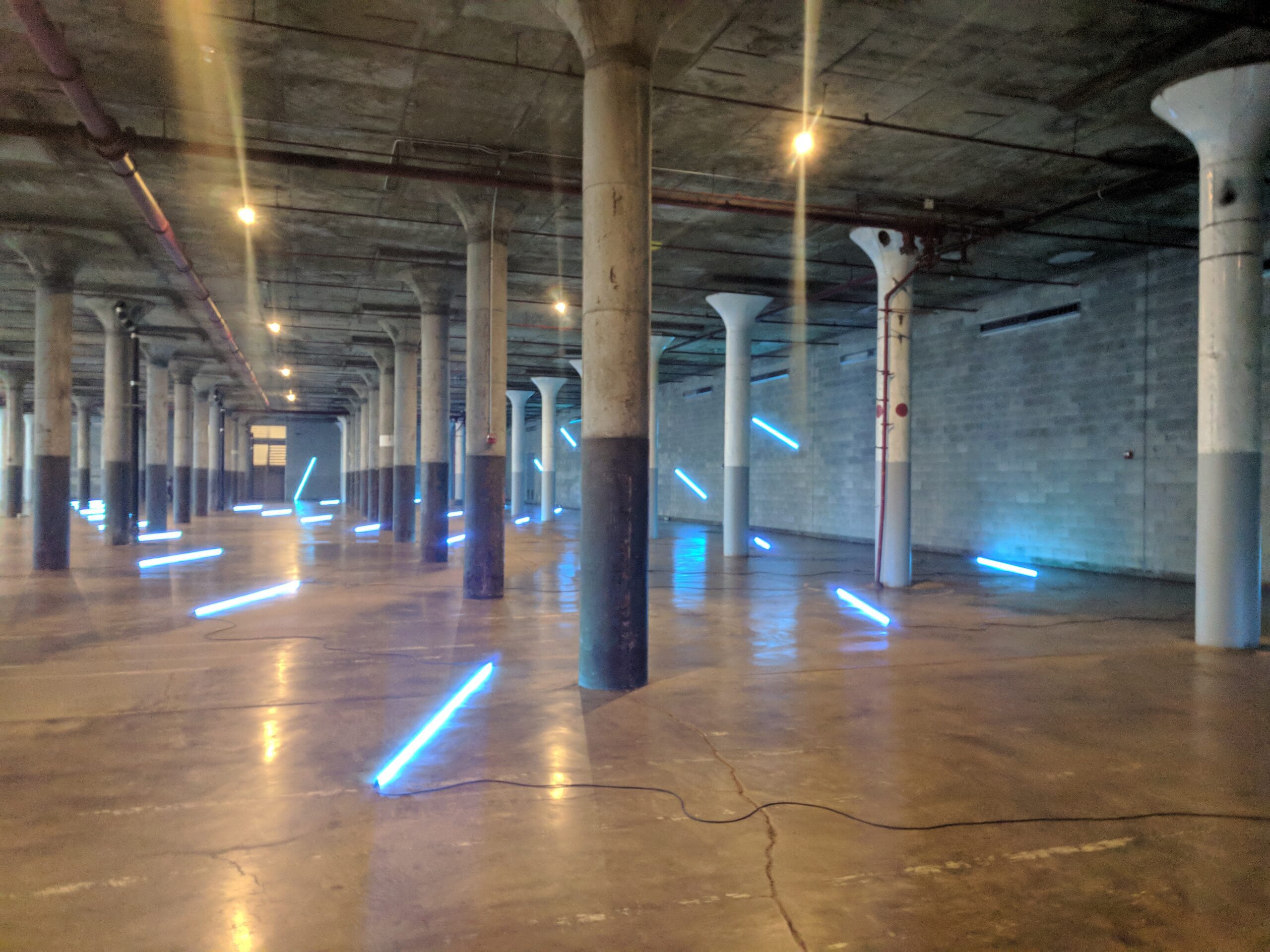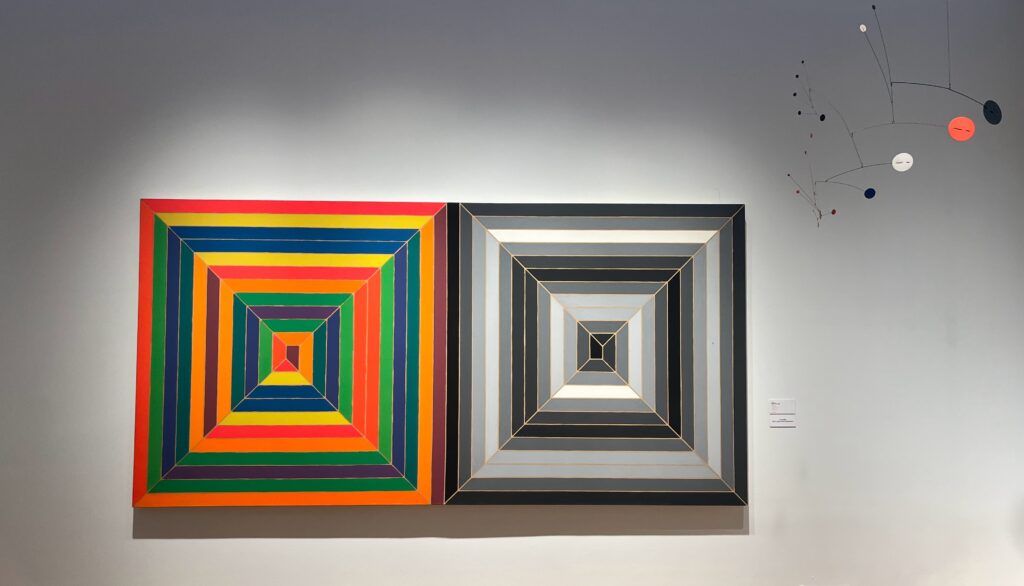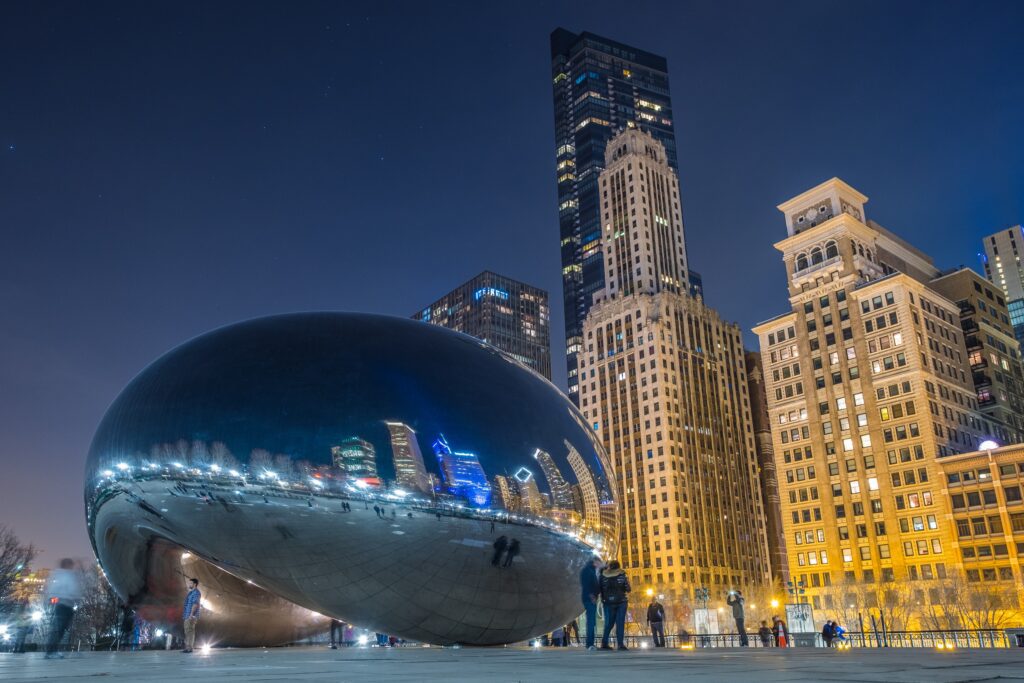
What Is Minimalism as an Art Style?
Minimalism is described as an extreme type of abstract art that usually is depicted through simplistic geometric shapes and hard edges, all while exposing the essence of the geometric forms and materials used.
The art style challenges preconceived notions of what art is and could be and commands the audience to view the artwork for what it is.

History of Minimalism
Minimalism emerged in New York in the early 1960s among artists who self-consciously renounced art they thought had become stale and academic. A wave of new influences and rediscovered styles led younger artists to question conventional boundaries between various media. Thus creating a new movement that rejected modernism and commanded a new approach to art forms.
In New York City in the mid-1950s, young artists like Donald Judd, Robert Morris, and Dan Flavin painted in the dominant Abstract Expressionist style. Still, they were drifting from it toward new directions inspired by a freshened knowledge of recent European art.
Works by members of the Dutch De Stijl group, the Russian Constructivists, and the German Bauhaus were shown in New York City museums and galleries at the time. All three groups had pioneered new definitions of the visual arts by going far beyond traditional painting and sculpture and calling for a new kind of geometric abstraction.
One of the main events that established Minimalism Art was the 1966 Primary Structures exhibition at the Jewish Museum in New York. It was the first American museum to present this art style, and the exhibition received great critical acclaim for introducing a new visual lexicon to the Western art canon.
The show included works by Dan Flavin, Sol LeWitt, Robert Morris, Carl Andre, and Donald Judd, who presented geometric and formally reductive artworks.
By the end of the 1970s, Minimalism had triumphed in America and Europe through a combination of forces, including museum curators, art dealers, and publications, plus new systems of private and government patronage.
Influences of Minimalist Art

Other art movements like Bauhaus and De Stijl influenced minimalist artists, especially when works from these movements were exhibited in New York.
The Bauhaus movement originated in Germany in 1919. As an art school, it explored various minimalist painting ideas, crafts, design, and later architecture, focusing on ideas of functionality versus aesthetics.
The “Homage to the Square” paintings (1949-76) of Josef Albers, a former teacher at the Bauhaus, used arrangements of squares within squares in which pictorial depth was an illusion based on color contrasts of the squares.
The Dutch De Stijl art movement, which originated in the Netherlands in 1917, focused on the fundamentals of creating art by sticking to primary colors, including only blacks and whites. Additionally, artists primarily used the most foundational shapes and forms on horizontal and vertical planes.
Piet Mondrian, a central proponent of De Stijl, adopted pure abstraction, promoted dynamic tension across the canvas surface, and emphasized the flatness of the picture plane. No longer would a painting pretend to be a window to another world.
Marcel Duchamp’s career would lead to a redefinition of the artist’s persona and relationship to art making. With sophisticated wit, he condemned the “retinal pleasures” of painting and, within his practice, combined painting, kinetic and static sculpture, photography, and film.
These early influences allowed artists to reassess the Surrealist-influenced world of Abstract Expressionism defined by intuitive and spontaneous gestures that had been dominant in American art for almost two decades.
What Is The Focus of Minimalist Art?
Minimalism in art refers to the move away from traditional notions that art needs to mean something more than what it is. Viewers are encouraged to see the artwork for what it is and how it occupies a space. Often, Minimalist paintings are created with simplicity and minimal shapes and lines, reducing the work to only its essential qualities.
The new art favored the cool over the dramatic meaning that gone were the times of their sculptures were frequently fabricated from industrial materials and emphasized anonymity over the expressive excess of Abstract Expressionism.
Painters and sculptors avoided overt symbolism and emotional content but instead called attention to the materiality of the works. The focus of the art movement is to dispel ornamentation and any representation, leaving viewers with the most reduced forms of the artwork rejecting the ideals of modernism and championing simplicity.
The Different Kinds of Minimalist Art

Minimalist Art is represented in different styles, including visual art, sculpture, interior design, installations, and architecture. Below, we discuss how this art movement presents itself in these modalities, including mention of prominent artists involved.
Visual Art
Visual art, or painting, has gone through hundreds of years of representation. Still, when it comes to Minimalism paintings, you will notice a world of two-dimensionality and geometric shapes, as if a three-dimensional object has been flattened onto the canvas.
Often, these paintings are simple in their color schemes, but they create the illusion of depth and space, which in turn creates a whole new representation of art. You would want to assume there is meaning to the composition, but this would come entirely from your own preconceived ideas of art.
Sculpture
Minimalist sculpture is a large part of this movement, and the three-dimensionality of the objects is a good example of what this movement is all about. The primary characteristic of this is that objects are simple and utterly fundamental in their shapes.
For example, a cube is a cube, and Minimalist artists sought to depict the object purely as the thing was and not give it any other meaning. Additionally, the artists played with the notion of how the onlooker would view the object in terms of its parts and how these make up the whole.
Interior Design
Following the above, Minimalist Art and sculpture become a part of the space it is in. Thus, it can enhance a space using this quality within interior design.
Because Minimalist Art is versatile and follows the simplicity of form and color, it can add to the ambiance of a space, making it either tranquil or edgy, depending on the use of colors and shapes.
Installations
Installations in minimalist art can be seen primarily in light installations, where artists play with how light affects the space it is in. Using fluorescent light tubes, artists would emphasize the light more than the tube itself to create an effect.
Architecture
Minimalist architecture will often appear geometric in its shapes without decorations. Additionally, there will be a lot of repetition of shapes or forms, often referred to as “seriality.” This means placing the elements of an artwork or object in a series, where the primary aim is to convey simplicity.
What Are the Key Elements of Minimalist Art?

Minimalist Art is somewhat easy to distinguish from other art movements. But with all art movements, the Minimalist Art movement has some distinct characteristics.
Simplified Forms
First and foremost, Minimalist Art is identifiable by the representation and use of sleek, simplified forms and geometric shapes.
Minimalists distanced themselves from the Abstract Expressionists by removing suggestions of biography from their art or metaphors of any kind. This denial of expression, coupled with an interest in making objects that avoided the appearance of fine art, led to the creation of sleek, geometric works that purposefully and radically eschewed conventional aesthetic appeal.
Monochromatic Colors
Another identifier of Minimalist Art is color, adhering to monochromes and primary color palettes. This makes the artwork more neutral in its approach, and the color does not become more than what it is. In other words, the colors are not used to convey personal expression but to convey impact and the work as it is.
The Influence of Constructivism
The post-Sputnik era revived active interest in Russian Constructivism. The Constructivist approach led to the use of modular fabrication and industrial materials in preference to the craft techniques of traditional sculpture.
The readymades of Marcel Duchamp were also inspirational examples of the employment of prefabricated materials. Based on these sources, Minimalists created works that resembled factory-built commodities and upended traditional definitions of art whose meaning was tied to a narrative or to the artist.
Raw and Pre-Fab Materials
The use of prefabricated industrial materials and simple, often repeated geometric forms, together with the emphasis placed on the physical space occupied by the artwork, led to some works that forced the viewer to confront the arrangement and scale of the forms.
Viewers also were led to experience qualities of weight, height, gravity, agility, or even the appearance of light as a material presence. They were often faced with artworks that demanded a physical and visual response.
Who Are The Most Famous Minimalist Artists?
The artists who became Minimalists wanted to produce less personal and more substantial art, believing that a work of art should not refer to anything other than itself. Thus by the early 1960s, many of these artists had abandoned painting altogether in favor of objects that seemed neither painting nor sculpture in the conventional sense.
Frank Stella
Although influenced by Abstract Expressionists like Jasper Johns and Barnett Newman, when he moved to New York in 1958, Stella’s abstract artworks did not have the same metaphorical and metaphysical undertones that many Abstract Expressionists imbued in their works.
For example, Frank Stella’s “Black Paintings” (1958-60), a series of hugely influential, concentrically striped canvases, were stretched on a thicker wooden chassis that thrust them out from the wall aggressively. This support emphasized the materiality and objecthood of abstract paintings, lacked evidence of brushwork, and achieved a state of flatness that was exemplary to others.
Stella’s paintings extended the possibilities of painting beyond simple rectangles to be framed (which they weren’t) and hung on a wall as an ornament. Instead, his works assumed physical characteristics of architecture and sculpture that contradicted all previous examples of painting.
Donald Judd
Judd was an essential theoretician of Minimalism and one of the key proponents of enlivening gallery spaces by placing objects in a non-conventional manner, in his case, by hanging art vertically on the wall.
Throughout the 1960s and 1970s, Judd created multiple versions of his seminal untitled works, always retaining the same scale but never using the same color or materials. He wanted his work to exist in real three-dimensional space rather than representing a fictitious three-dimensional space or narrative as in traditional painting and sculpture.
Robert Morris
Morris’ sculptures explored simple geometric shapes on a large scale, such as cubes and different rectangular forms. The viewer became a part of the process in terms of how they interacted with the artwork, especially when walking around a large piece.
Robert Morris wrote an essay in 1966 titled “Notes on Sculpture,” which explores the process of viewing and interacting with a structure and how it is “intuitively” interpreted by the viewer.
Post Minimalism
Post-Minimalism emerged in the late 1960s and early 1970s when art critic and historian Robert Pincus-Witten introduced the term. As much as it was a reaction towards some of the tenets of Minimalism, it did incorporate elements and influences from the movement.
Artists created diverse works of art, some with a more intentional emphasis on art’s traditional, expressive nature and some utterly impersonal in their material representation. Movements developed from Post-Minimalism include Conceptual Art and Environmental Art from artists Richard Serra and Tony Smith.
Final Thoughts
As everything ended, so did the Minimalist Art movement during the later stages of the late 1960s. Many artists continued to evolve along their unique journeys and did not prescribe to remaining within a particular art movement. However, this did not stop what Minimalism in art meant.
Ultimately, it created new foundations and a springboard for art and artists entering the 20th century and 21st Centuries, reaching many other art forms, including Contemporary art, music, literature, and film.